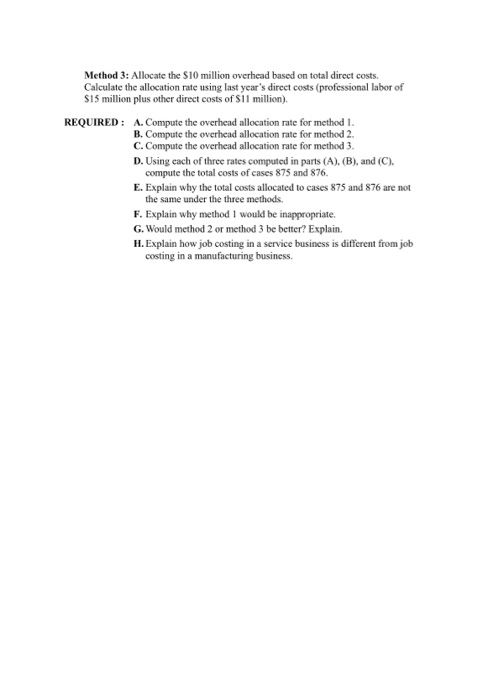Hawk and Eagle Co., a law firm, had the following costs last year: Direct professional labor Overhead Total costs $15,000,000 21.000.000 $36.000.000 The following costs were included in overhead: SS.000.000 2.700.000 600,000 Fringe benefits for direct professional labor Paralegal costs Telephone call time with clients estimated but not tabulated) Computer time Photocopying Total overhead 1.800.000 900.000 SI1.000.000 The firm recently improved its ability to document and trace costs to individual cases. Revised bookkeeping procedures now allow the firm to trace fringe benefit costs for direct professional labor, paralegal costs, telephone charges, computer time, and photocopying costs to each case individually. The managing partner needs to decide whether more costs than just direct professional labor should be traced directly to jobs to allow the firm to better justify billings to clients. During the last year, more costs were traced to client engagements. Two of the case records showed the following: Client Cases 875 876 Direct professional labor $20,000 $20,000 Fringe benefits for direct labor 3.000 3,000 Secretarial costs 2.000 6,000 Telephone call time with clients 1.000 2.000 Computer time 2.000 4.000 Photocopying 1.000 2.000 Total costs 529.000 $37.000 Three methods are being considered for allocating overhead this year: Method 1: Allocate overhead based on direct professional labor cost. Calculate the allocation rate using last year's direct professional labor costs of S15 million and overhead costs of S21 million Method 2: Allocate overhead based on direct professional labor cost. Calculate the allocation rate using last year's direct professional labor costs of S15 million and overhead costs of S10 million (S21million less Sil million in direct costs that are traced this year). Method 3: Allocate the $10 million overhead based on total direct costs. Calculate the allocation rate using last year's direct costs (professional labor of $15 million plus other direct costs of S11 million), REQUIRED: A. Compute the overhead allocation rate for method I. B. Compute the overhead allocation rate for method 2. C. Compute the overhead allocation rate for method 3. D. Using each of three rates computed in parts (A), (B), and (C). compute the total costs of cases 875 and 876. E. Explain why the total costs allocated to cases 875 and 876 are not the same under the three methods. F. Explain why method I would be inappropriate. G. Would method 2 or method 3 be better? Explain. H. Explain how job costing in a service business is different from job costing in a manufacturing business








